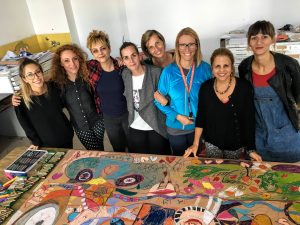
This past September, I spent several weeks in Croatia teaching in a first-of-its-kind art therapy postgraduate program at the J.J. Strossmayer University of Osijek, Academy of Arts and Culture. This new art therapy training program was created in collaboration with faculty from the Art Therapy Program at the George Washington University in Washington, DC. Located in the far northeastern corner of country, and far from the scenic coastal cities that beckon hordes of tourists, Osijek and the surrounding region share a rich history, but one that is also marred by cultural upheaval and violent warfare. The Croatian War of Independence (1991-1995) was a protracted conflict between the country’s Croat and Serbian population, making bitter enemies of neighbors and taking the lives of thousands in its wake. This conflict, referred to as the “Homeland War” was fought between citizens of Croatia who declared independence from Yugoslavia and the Serb-controlled Yugoslavian Army.
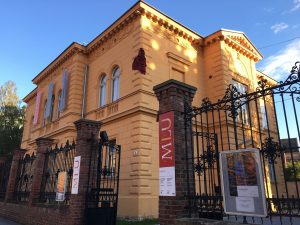
Perhaps no battle in this war was as brutal as the 87-day siege of Vukovar, a city less than an hour’s drive south-east of the town where I was teaching. Terrified Croatian residents sought refuge for months on end in cellars and communal bomb shelters, desperately trying to avoid the 12,000 shells and rockets fired by Serbian led Yugoslavian Army that fell daily on the city center. The small Croatian resistance army was a rag tag group lacking official uniforms or even basic supplies and ammunition. When the Serb forces took the city in November of 1991, they further punished the Croats by massacring large numbers of civilians and expelling more than 20,000 residents as part of a brutal ethnic cleansing campaign. Given Croatia’s extensive history of upheaval, it is not a surprise that a significant percentage of the population bears both visible and invisible wounds related to war trauma. Although Croatia did achieve its independence in 1995, deep divisions remain in the community. Most of the population have a direct or indirect link to the past traumatic events, and many are dealing with the effects of intergenerational trauma, PTSD and related mental health issues (anxiety, depression, substance abuse etc.) It was to gain a better understanding of this legacy of trauma that my students insisted from the outset of my time in Croatia that I visit the town of Vukovar and experience firsthand the somber memorials, historical sites, and museums that pay homage to this devastating period of conflict. The weight of the cultural and human tragedy was felt most directly when I stood with them at the site of a mass grave where hundreds of civilians had been brutally tortured and were then executed by Serbian forces. The visit to Vukovar was the perhaps the most impactful part of my trip, allowing me to deal directly with the scenes of war and manifestations of trauma visited upon the Croatian people.
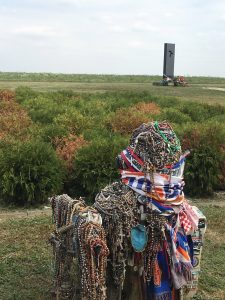
Even today, in the surrounding villages and cities, devastating reminders of war can be seen in many of the otherwise elegant European style buildings. In some cases bullet holes and large shrapnel damage have been deliberately left unrepaired as both a memorial to the conflict and tragically as a reminder that deep divisions and distrust still exist between the city’s residents. I took what I felt and learned during my visit to Vukovar back to the classroom in Osijek and tried to integrate this impactful experience into our intensive course of study. The course work revolved around teaching an introduction to trauma theory (including basic interpersonal neurobiology and neuroscience, polyvagal theory, attachment theory etc.) and, through lecture, discussion and experiential learning, demonstrating the value of a non- verbal approach (art therapy) for managing and resolving trauma responses. Since I teach a similar yearlong course at George Washington University, I came prepared with dozens of slides and handouts that demonstrated these concepts. While the Croatian students were interested in the theories and cases I presented, it became increasingly clear that reminders of war trauma were ever present in this culture and many of these students and their loved ones were still dealing with the lingering effects. They feared confronting the subject of trauma, doubted their ability to work with the affected veterans and their families, and felt vulnerable and unprepared for the inevitable flooding of feelings and grief that might arise if the right (or wrong) question were posed.
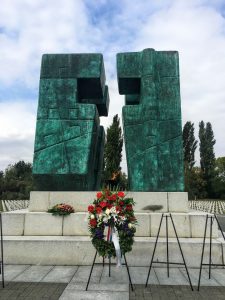
They asked me: “How do I manage a spouse or significant other with PTSD who will have nothing to do with therapy?” “What happens when their trauma is exposed?” “Where can I begin?” and “We have no time to develop a therapeutic relationship. They (the veteran) will just walk away when we start a conversation.” There was a quality of desperation and possibly futility in some of these questions, and yet I detected curiosity and even hopefulness as well. As a trauma therapist I knew I needed to hear the unique perspective of each student and listen for ways to offer a sensitive response. I provided the students a range of art therapy tools and techniques to facilitate self-awareness and self-expression. Through various forms of art making and metaphor, we created a “safe space” in the classroom which was our laboratory for learning and processing traumatic experiences. In order to deal with the feared subject (how to actually “deal” with trauma) I invited the students to creatively paint, draw, sew and sculpt in response to their own traumas, starting with smaller (less devastating) ones and ultimately moving to the more complex, emotional memories. Working together in this way, much work was done and many feelings could be expressed. Our classroom became a container for shared experiences. Making art was the perfect medium to bring these feelings to the surface in that that they could be created, managed, and contained without a reliance on words. This creative expression is the basis for art therapy practice and something humans have done naturally for millennia. The students soon warmed to the experiential activities of an art therapy studio approach and began to open up and share more deeply. We practiced grounding and containment skills, worked with the body and regulation of the nervous system, and created graphic narratives for the consolidation of traumatic memories.
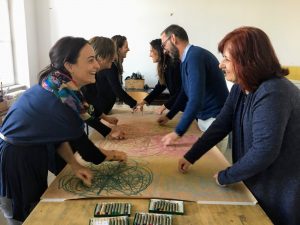
As my time in Osijek came to an end, there were inevitably many difficult questions lingering, and of course many remain unanswered. But I am continuing to provide weekly group supervision via an online collaborative tool (Zoom) and am listening to students present their cases with increasing confidence and competence. I can see the integration of trauma sensitive art therapy happening in their clinical practice. And, in our last supervision session, I was delighted to learn that one student will soon begin working in a psychiatric setting with veterans who are dealing with PTSD, which was an inconceivable idea only several months prior. Tally Tripp is a Licensed Clinical Social Worker, Board Certified, Registered Art Therapist, and Assistant Professor at the George Washington University. She is also a Fellow of the ISSTD, a Board Member of ISSTD, and the Chair of the Creative Arts Therapy Special Interest Group

